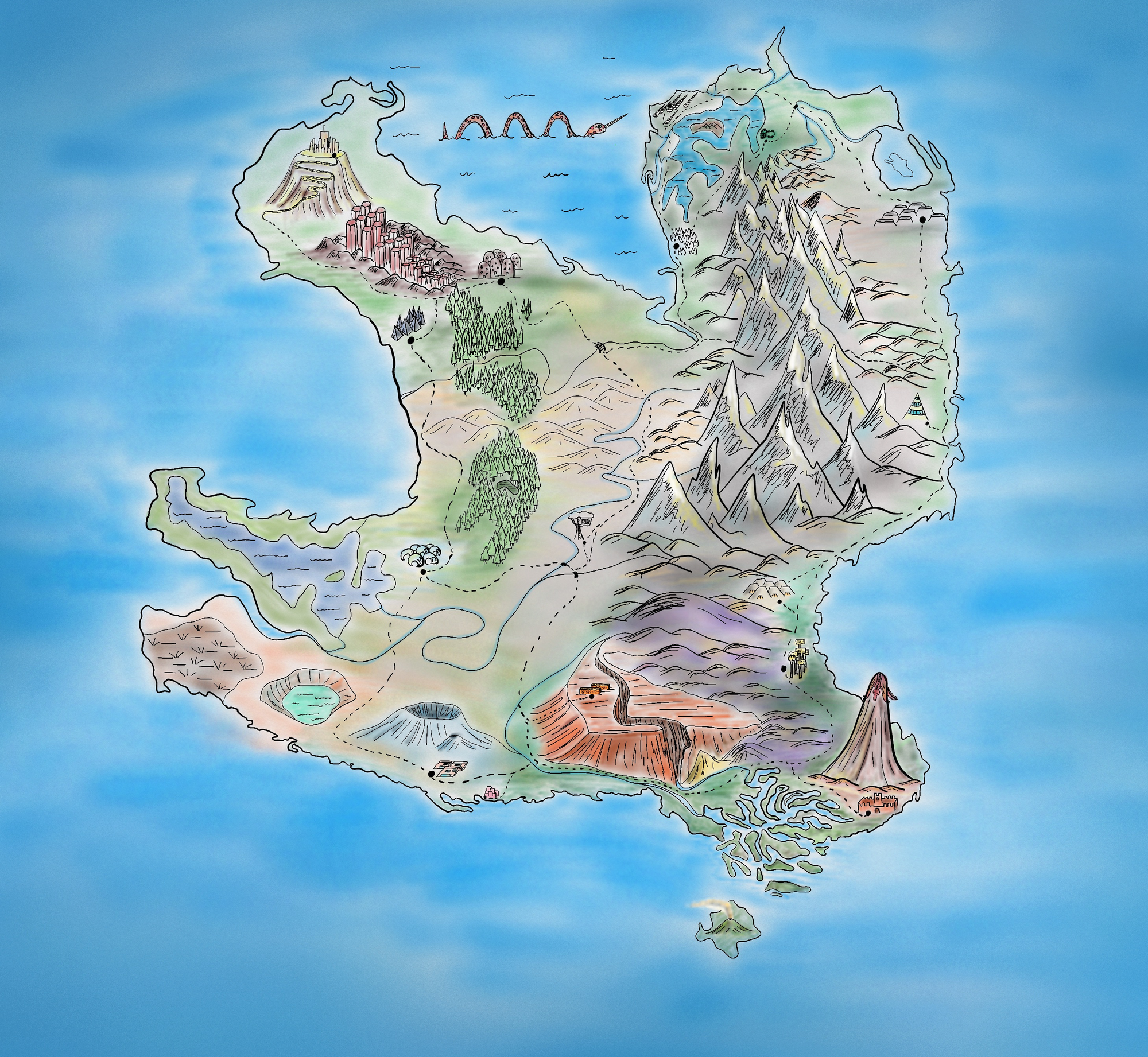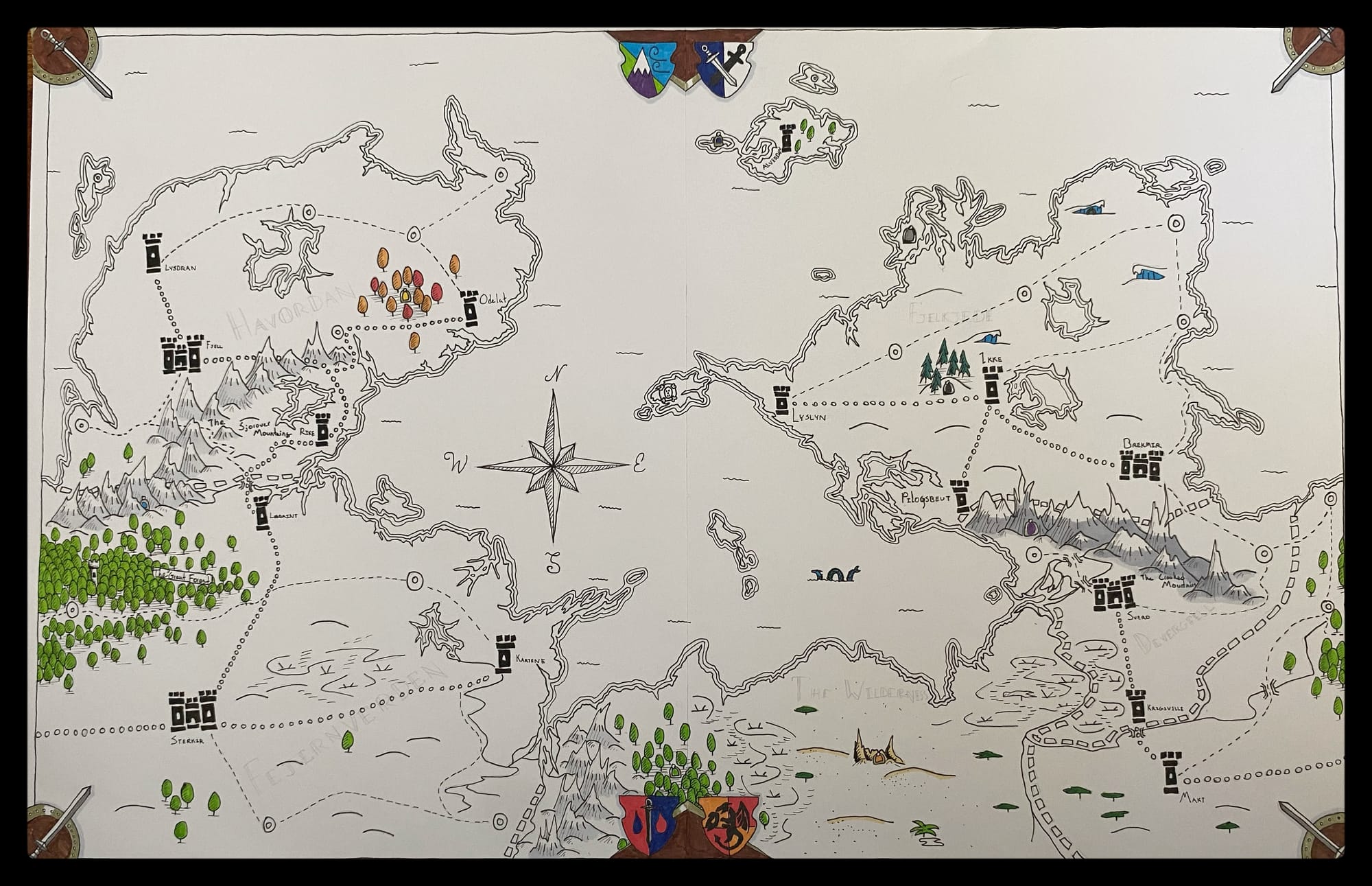WB: Mapmaking
What type of world are you going to create?

“Imagination is more important than knowledge. Knowledge is limited. Imagination encircles the world.” ―Albert Einstein
Getting Started
Take a moment and think about a world that you would like to create. What stories, science, or inventions will come from this world? Just think of the possibilities!
The goal of this activity is to create a map that will become the foundation for your world. Before you start drawing, ask yourself some of these questions:

- How fast is transportation on this world? How does the speed affect the size of the world and how the peoples will interact? (Horse and carriage vs. supersonic tubes.)
- What is the geology? Where are continental plates, tsunamis, earthquakes, or other geographical features?
- Is there a moon, or moons? Are there tides? What would a tide chart look like on this world?
- How do rivers flow? (Think of our mountain ranges and east/west flow.)
- What scale will your map be? You don’t have to think about projections, but if you want to, try to do cylindrical for this first map.
- You are going to show the tip of the iceberg of what this world will be. You will have far more knowledge about your planet than you can show here. What are the key geographic features you want to show?
Once you have an idea for your world, start drafting. If you want some help on fantasy maps, there is a video here.

Now for some STEAM…
STEAM – Questions and activities with your map.
Note: You don’t need to do all of these – they are just examples of STEAM applications with worldbuilding.
- What plots are you using in your current math learning? Can you overlay a transparent grid to get coordinates for locations?
- What are some key distances?
- How long would it take for someone living there to travel from one city to another?
- Can you describe the paths? With functions? (This can be at an elementary level or with calculus.)
- What is the frequency of geological events? Think of ratios (time vs. tsunamis, floods, or earthquakes).
- What is the range of elevation? What is the highest altitude that people can breathe?
- How deep is your ocean (if you have one)?
- What is the fastest a person can travel on your world? What is the circumference? How long would it take to make it all the way around?
- What would a roadside geology brochure look like for your world?
- How many species live on your planet? Are there geographic and political borders?
- If you have borders, what is the minimum number of colors needed to color your map?
- There are thousands more of questions and activities with just the map. A notebook/journal is a great way to build your world and all its details.
If you want to load your own drawing into a sphere, click here for the post.
